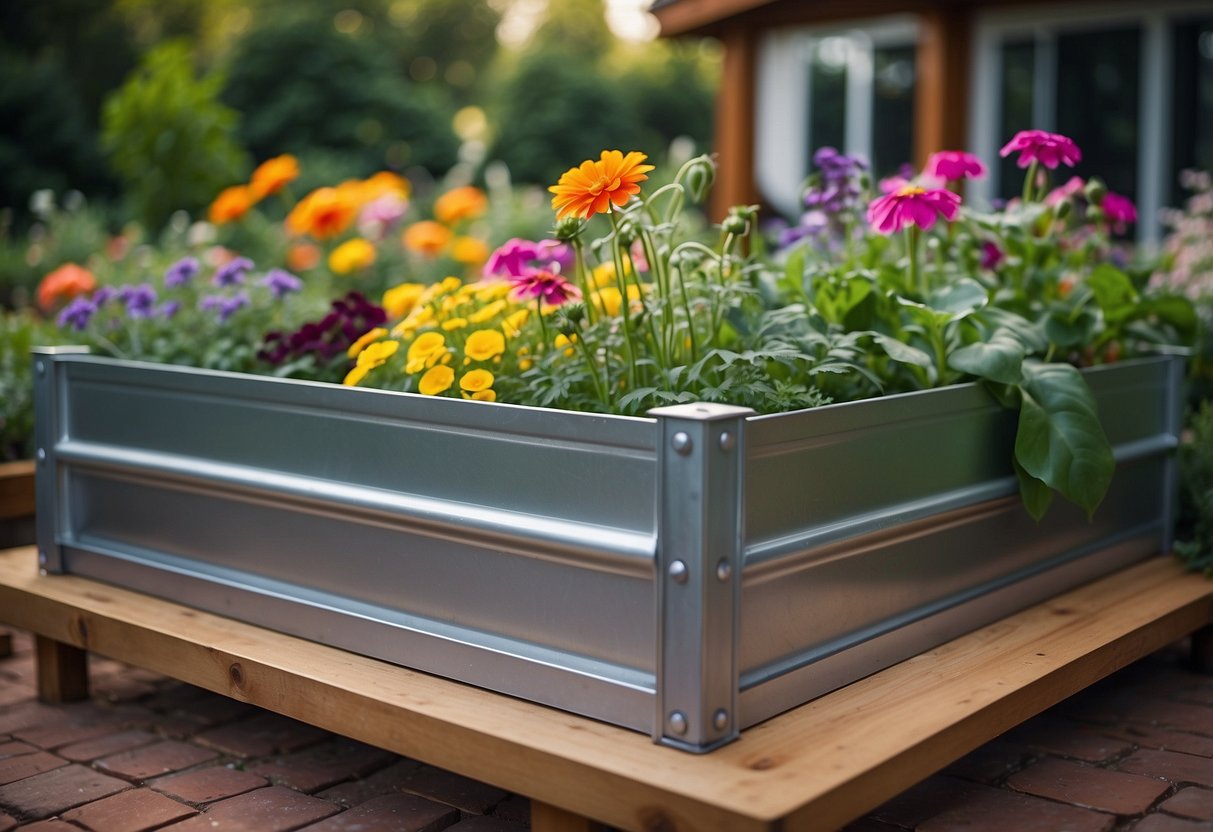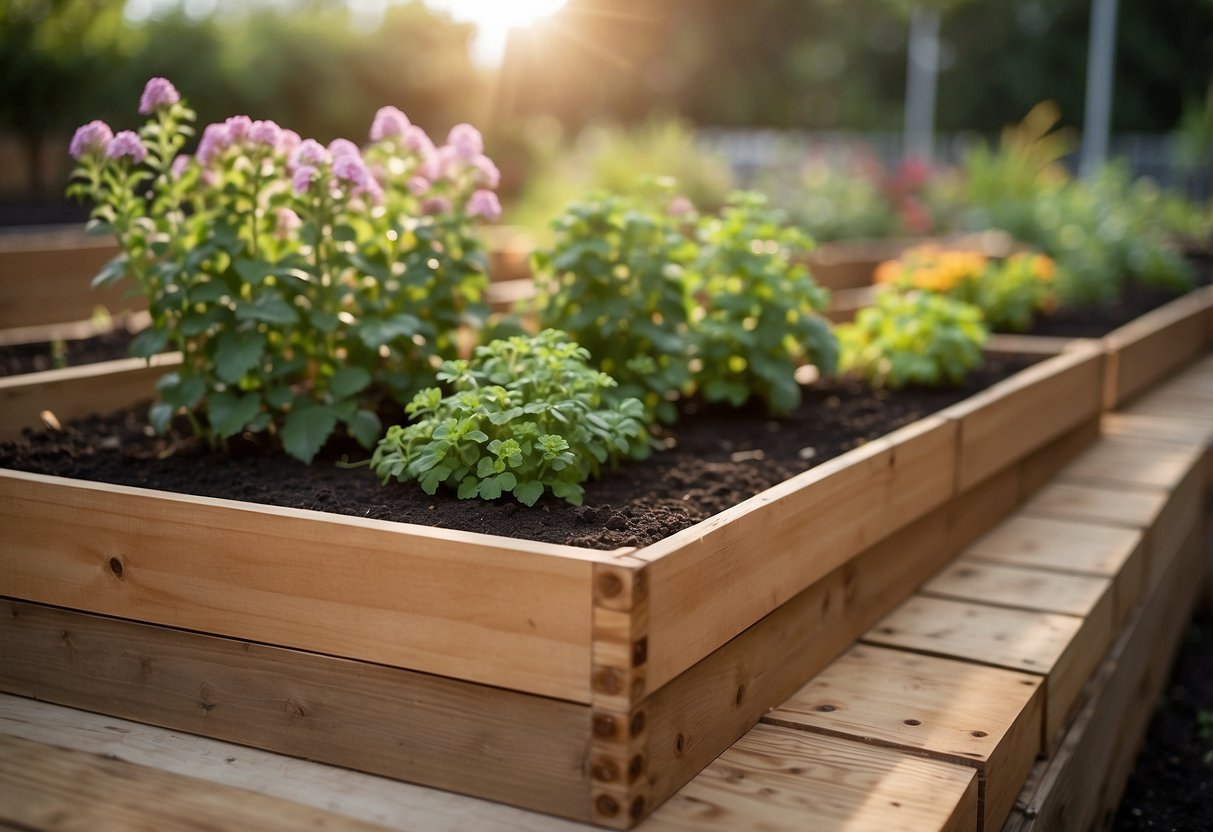Cheap Raised Garden Bed Ideas: Budget-Friendly Solutions for Your Backyard
Creating a raised garden bed doesn’t have to cost a lot of money. Whether you’re new to gardening or an experienced green thumb, finding budget-friendly solutions can make your gardening project even more rewarding. Using readily available or recycled materials, you can keep costs low and still enjoy a beautiful and productive garden.

What are some simple and inexpensive ways to build a raised garden bed? This article will explore various creative ideas that you can easily implement. From using old wood pallets to repurposing household items, there are plenty of options to fit any budget and style. Get ready to discover a range of ideas that will help you build a raised garden bed without breaking the bank.
1) DIY Wooden Pallets

Building a raised garden bed from wooden pallets is a cheap and eco-friendly option. You can easily find pallets for free at local businesses or online marketplaces.
First, dismantle the pallets and use the planks to create the bed frame. Stack the pallets and fill them with dirt.
This approach is simple and gives you plenty of grow space. For more details, visit these pallet garden ideas.
2) Galvanized Steel Beds

Galvanized steel beds are a great choice for your garden. They are durable and resist rust, making them last a long time.
You can find these beds in many shapes and sizes. This makes it easy to fit them into any garden layout. They also have a modern look.
Assembly is usually straightforward. Many kits come with everything you need. These types of beds are also easy to maintain.
For more details, check out these plans and tutorials that guide you through the process.
3) Cedar Raised Bed Kit

Cedar raised bed kits are a great option if you want a simple yet effective garden bed. These kits come with all the necessary parts, making assembly easy for beginners.
Cedar wood is naturally resistant to insects and rot, which means your garden bed will last a long time. Plus, its pleasant smell makes it enjoyable to work with.
You can find these kits at most home improvement stores or online. They’re usually affordable and come in various sizes to fit your gardening space. For more ideas, check out these DIY cedar raised garden beds.
4) Recycled Plastic Beds

Using recycled plastic containers for garden beds is a great idea. You can find these containers at local stores or recycle your own. They are durable and can withstand harsh weather conditions.
Make sure to drill drainage holes in the bottom. This ensures your plants do not get waterlogged.
Recycled plastic is a budget-friendly option. It helps reduce waste and gives new life to old materials. It’s an eco-friendly choice for any gardener.
5) Cinder Block Garden

A cinder block garden is an easy and budget-friendly option. You can create the bed by stacking cinder blocks in your desired shape and size. The holes in the blocks can be used to plant herbs or flowers.
Using cinder blocks also allows you to get creative. You can stack them vertically for a vertical garden or leave spaces for decorative touches.
Plus, building a cinder block garden requires minimal tools and effort. It’s a great weekend project! For more ideas, check out these amazing cinder block garden beds.
6) Brick Raised Bed

Brick raised beds are a great choice for your garden. They are sturdy and can last for decades.
You can use old bricks or buy new ones. Bricks are often available on platforms like Facebook Marketplace.
Building with bricks gives your garden a classic and neat look. It also adds a bit of warmth and charm.
You can easily shape the bed however you like. This flexibility helps you design a garden layout that fits your space perfectly.
7) Wine Crate Planters

Using wine crates for your garden is a fun and cheap way to grow plants.
You can often find these crates for free or at low cost from local wine shops or online marketplaces.
Just line the bottom with landscape fabric and fill them with soil.
These planters add a rustic charm and are perfect for small spaces like patios or balconies.
8) Tire Planters

Using old tires for planters is a great way to recycle. Just paint them in bright colors to add a bit of fun to your garden.
Hang a painted tire with some rope, or stack a few to create a vertical garden. This is not only eco-friendly, but also helps you save money.
Consider lining the interior with landscape fabric before adding soil. This can help keep the soil in place and improve your plants’ growth. For more ideas, check out these tire planter ideas.
9) Upcycled Bathtub Garden

Using a vintage bathtub as a raised garden bed is both creative and eco-friendly. You can find old bathtubs at thrift stores or salvage yards.
First, make sure to place your tub in a sunny spot since many plants need full sun to thrive.
Then, drill some drainage holes in the bottom to prevent water from pooling. Fill your tub with nutrient-rich soil.
This method adds a quirky charm to your garden and gives new life to an old item. Learn more about setting up a bathtub garden.
10) Corrugated Metal Planters

Corrugated metal planters are a great option for a cheap raised garden bed. They are durable and provide a rustic charm. You can customize the size to fit any space in your garden.
To start, you need corrugated metal sheets, wood for the frame, and some deck screws. Build the frame using 2″x 3″ wood pieces, then attach the metal sheets to the sides.
For stability, make sure to use quality fasteners. This ensures that your garden bed holds together well. Adding landscape fabric inside will help with soil retention and prevent weeds.
For more detailed instructions, check out Crafting a DIY Corrugated Metal Raised Bed Garden or visit My Crazy Good Life’s guide.
Benefits of Raised Garden Beds

Raised garden beds offer multiple advantages that can make gardening easier and more productive. Key benefits include improved soil drainage and easier pest control.
Improved Soil Drainage
One major benefit of raised garden beds is the control you have over soil drainage. In a raised garden bed, you can choose the soil mix and tailor it to your plants’ needs. This allows for better water management.
Unfortunately, soil in traditional gardens can become compacted and drain poorly, leading to root rot and other issues. Raised garden beds help avoid this problem by elevating the soil, improving water flow, and reducing the risk of waterlogged roots.
In areas with heavy clay or sandy soil, a raised garden bed can be a game-changer. You can mix soil types to achieve the perfect balance. This leads to healthier plants and bountiful harvests. Plus, it makes it easier to add compost and other organic matter, enriching your soil over time.
Easier Pest Control
Pest control becomes more manageable with raised garden beds. By elevating the bed, it is harder for ground-dwelling pests, like slugs and snails, to reach your plants.
Raised garden beds can be easily fitted with barriers or covers to protect against insects and animals. For instance, chicken wire or mesh can keep out birds and rabbits. Additionally, adding copper tape around the edges can deter slugs and snails.
You also get the benefit of accessibility. Raised beds make it easier to inspect plants regularly, spot potential pest problems early, and take action. This frequent monitoring can lead to quicker responses and less damage to your plants.
Using raised garden beds means fewer pests reach your plants, making your gardening experience more enjoyable and productive.
Materials for Building Raised Garden Beds

Choosing the right materials for your raised garden bed can make all the difference. You’ll want to consider durability, cost, and ease of assembly.
Wood Options
Wood is a popular choice for raised garden beds because it’s easy to work with and looks natural in the garden. Cedar and redwood are great options because they resist rot, lasting longer in wet conditions. Pine is more affordable but may need treatment to prevent decay.
For a more rustic look, you can use reclaimed wood. This option is eco-friendly and can often be found for free or at a low cost. Just ensure the wood hasn’t been treated with harmful chemicals that could leach into your garden soil.
If you prefer more structure, you can use railroad ties or railway sleepers, often available in lumber yards or given away. They provide a sturdy and rugged frame for your garden beds.
Metal Frames
Metal frames are another excellent option for raised garden beds. These materials are sturdy and can provide a modern look to your garden. Galvanized steel is a popular choice because it resists rust and weathering, making it perfect for outdoor use.
A simple way to create a raised garden bed is by using a steel bin or stock tub. These are easy to find and ideal for containing your plants. They also have a rustic charm and are very convenient for weeding and maintenance.
Another material to consider is corrugated metal, which can be cut to size and fit into wooden frames for a unique and industrial aesthetic. These beds will hold up well over time but can be more expensive than other options.
Recycled Materials
Using recycled materials for your raised garden beds is both eco-friendly and cost-effective. Old tires can be stacked to form circular garden beds, although they might not be aesthetically pleasing to everyone.
Concrete blocks or cinder blocks are another durable and budget-friendly option. They are versatile and can be arranged in various shapes to suit your garden layout. Plus, they add an industrial look that some gardeners love.
Plastic barrels or tubs can also be repurposed into garden beds. They are lightweight, easy to move, and good for small spaces. Make sure they’re food-grade plastics to avoid any harmful chemicals in your soil.
For a truly unique garden bed, you can repurpose wood boards from old pallets. Pallets are usually free and can be found at many businesses. They are sturdy and can be assembled into different bed shapes to fit your space.
Design Tips for Raised Garden Beds

Creating a raised garden bed involves considering sunlight exposure for optimal growth and incorporating design elements for visual appeal.
Optimizing Sunlight Exposure
To ensure your plants thrive, place your raised garden bed in a spot that gets at least 6-8 hours of sunlight each day. Most vegetables and flowers need full sun to grow well.
Tips for Optimal Placement:
- Orientation: Align the beds north to south so that all plants get equal sunlight.
- Avoid Shadows: Keep the beds away from tall trees, fences, or buildings that cast shadows.
- Adjust Seasons: During different seasons, the sun’s path changes. In summer, it is higher, so check shadows and adjust accordingly.
Thinking ahead about where to place your raised garden beds can help your plants get the light they need to flourish.
Incorporating Aesthetic Elements
Making your garden bed visually appealing adds joy to your gardening experience. Start by choosing materials that match the style of your space, such as wood, stone, or repurposed items.
Creative Ideas:
- Borders: Use decorative borders like bricks or colorful tiles.
- Patterns: Arrange plants in patterns or shapes for visual interest.
- Add-ons: Consider adding a trellis or plant markers, which can be both functional and decorative.
Plant Selection:
- Color: Mix plants with different colors and textures.
- Height: Place taller plants in the center or back and shorter ones at the edges for a layered look.
Incorporating these design tips can make your raised garden bed both functional and beautiful.







